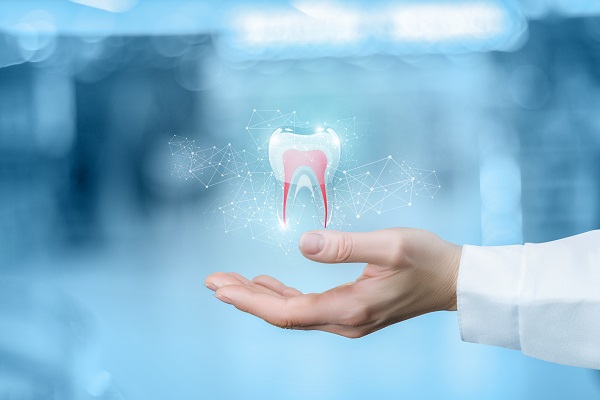Fixed Dental Bridge to Replace a Missing Tooth

A missing tooth can diminish the appearance of a person's smile, make it more difficult to chew food, cause other teeth to shift out of position, create bite problems and even lead to challenges speaking. A fixed dental bridge may prevent or minimize these potential problems.
Fixed dental bridge
A fixed dental bridge is two or more crowned teeth on either side of a missing tooth with one or more false teeth between them. The crowned teeth, which can be natural teeth or implants, anchor the bridge and provide support. The false tooth or teeth can be made from a variety of materials, such as gold, alloys or porcelain, and are designed to look and function like natural teeth.
Benefits of dental bridges
Dental bridges can address most of the problems created by missing teeth. Fixed dental bridges have multiple benefits:
- Improve the appearance of the smile
- Maintain the shape of the face
- Correct bite problems
- Restore the ability to chew and speak
- Prevent adjacent teeth from moving out of position
Process of getting a dental bridge
Most people can get a bridge done by a regular dentist; however, there are also dentists, called prosthodontists, who specifically work with restoring missing teeth. The first step is to prepare the teeth, called abutment teeth, that will anchor the bridge. The preparation process involves removing a portion of the enamel on these teeth to make room for the crowns that will be added.
Next, impressions are made of the teeth. These impressions are then sent off to a lab to be used as a model for the bridge. The dentist will provide the patient with a temporary bridge to protect the exposed gum and teeth while the permanent bridge is being made.
Once the bridge is made, the dentist will replace the temporary bridge with the permanent bridge and make any necessary adjustments. The process of achieving a proper fit may take multiple visits. When a good fit is achieved, the dentist will then permanently cement the bridge into place.
The recovery process
Patients may experience mouth pain and sore or bleeding gums after getting a dental bridge. These symptoms usually resolve after a few days, but it may take a few weeks for the gums to completely heal. Most patients can return to work or school the day after the procedure.
Taking care of a dental bridge
Maintaining the health of the abutment teeth is critical to maintaining the integrity of the bridge. Following the advice of a dental professional and getting regular dental checkups can help to maintain the health of these teeth. Early treatment can prevent many oral health issues from getting worse, so it is important to promptly report any problems with the bridge or surrounding teeth to a dentist.
Conclusion
A missing tooth can have serious consequences on the appearance and health of a person's teeth. Replacing missing teeth with a fixed dental bridge can improve the look of the smile and avoid many oral health problems caused by missing teeth.
Request an appointment here: https://www.northside-dentalcare.com or call Northside Dental Care, PC at (978) 206-7077 for an appointment in our Peabody office.
Check out what others are saying about our services on Yelp: Read our Yelp reviews.
Recent Posts
Curious about what a restorative dentist does? Read on to learn more. The unexpected nature of dental injuries can turn ordinary moments into emergencies. These injuries impact oral health and comfort, whether it is from sports mishaps, accidental falls, or an auto accident. A restorative dentist has the skills and tools to repair and restore…
You may desire to learn ways to keep your smile healthy and bright if you have recently undergone smile makeover procedures such as getting veneers, dental bonding, or teeth whitening. To keep your teeth healthy and your smile looking great for a long time, there are certain foods and drinks to reduce your consumption of…
An emergency dentist is essential for treating dental injuries, including a knocked-out tooth. Whether resulting from a sports injury, accident, or fall, a lost tooth requires immediate attention to improve the chances of successful re-implantation. Timely care from a skilled emergency dental professional further increases the likelihood of preserving the tooth and reducing the risk…
When sudden dental pain occurs, an emergency dentist can provide critical relief and timely treatment. A toothache often appears unexpectedly, disrupting daily activities or restful sleep at night, signaling that you need urgent dental care. Understanding what steps to take when this type of pain occurs can help prevent further complications to your teeth and…


